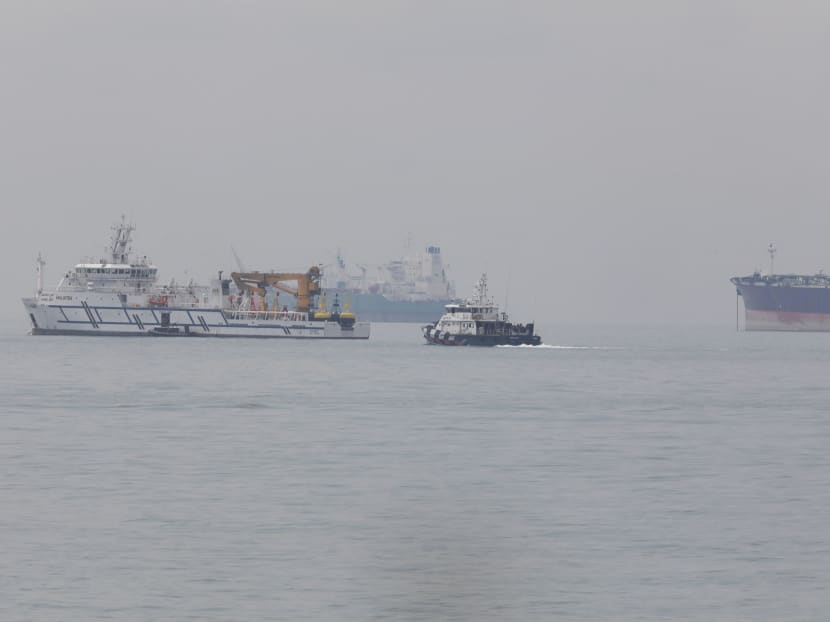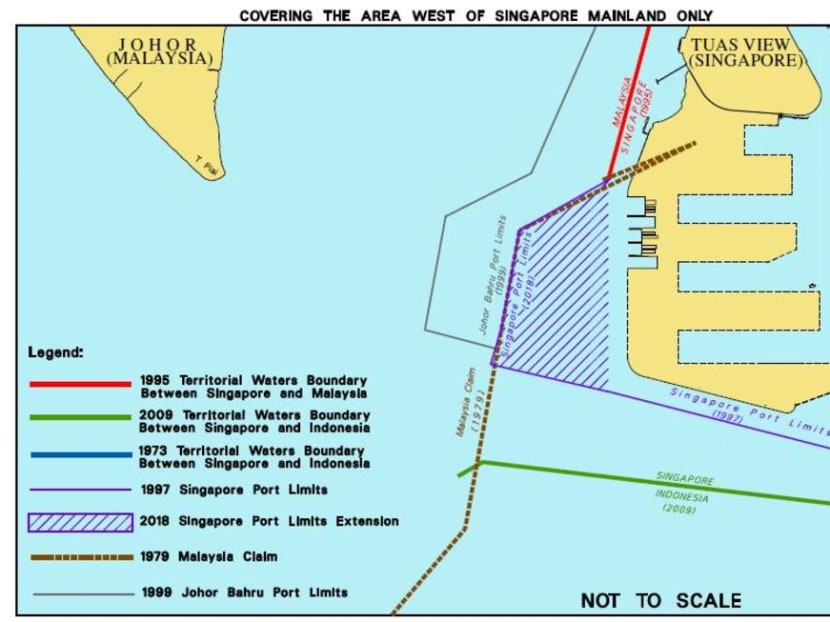De-escalating S’pore-M’sia maritime dispute a first step in a long journey: Vivian Balakrishnan
PUTRAJAYA — While Singapore and Malaysia’s move to de-escalate the maritime dispute is an “important first step”, it is just one step in a “long journey” ahead, the Republic’s Foreign Affairs Minister Vivian Balakrishnan said on Thursday (March 14).

A Singapore Police Coast Guard vessel and a Malaysian vessel in a confrontation at the south of Tuas View Extension in 2018.
PUTRAJAYA — While Singapore and Malaysia’s move to de-escalate the maritime dispute is an “important first step”, it is just one step in a “long journey” ahead, Singapore's Foreign Affairs Minister Vivian Balakrishnan said on Thursday (March 14).
Dr Balakrishnan was speaking to the Singapore media after he and his Malaysian counterpart Saifuddin Abdullah agreed to implement five recommendations proposed by a bilateral working group set up by both countries in January.
The recommendations, to be put into effect within a month from March 14, stated among others that both countries will revert to their original port limits after their respective governments agreed to suspend the previous extensions of their port limits.
They also agreed not to authorise and to suspend all commercial activities, as well as not to anchor any government vessels in the area.
The main objective of these recommendations is to de-escalate the situation on the ground and lower the risk of untoward accidents, said Dr Balakrishnan. Once that has been achieved, it sets up a “right environment” to start negotiations for the delimitation of the maritime boundary, he added.
He noted that negotiations cannot take place “if there are things happening on the ground or there's tension and there's a very real risk of collision or accidents”.
Last month, the Singapore Government renewed calls for its neighbour to withdraw its government vessels from the territorial waters off Tuas in Singapore. This, after Polaris — a Malaysian government vessel which has been intruding into Singapore’s waters since December — collided with the Greek merchant ship Pireas.
Dr Balakrishnan said that given the history and geographical proximity of both neighbours, there will be issues that crop up from time to time.
“Right now we've several issues that need to be resolved. My approach is to resolve them one by one. Wherever we can make progress, we will make progress. Those which will take longer to gestate, we will do so in a more deliberate, careful way,” he told reporters.
“So, this is a positive step but one step in a long journey.”
Since the Malaysian Pakatan Harapan government took power last May, several past and new disputes have arisen. These included the maritime and airspace disputes as well as the decades-old issue of water prices, which came under the spotlight recently following an exchange of words by both Singapore and Malaysia’s foreign ministers.
DIFFERENCE BETWEEN NEW AND PREVIOUS PROPOSALS
On Oct 25 last year, Malaysia unilaterally extended the Johor Baru port limits, cutting into Singapore’s territorial waters off Tuas.
This was followed by Malaysian government vessels making repeated intrusions into Singapore's waters.
In December, Singapore responded by extending its own port limits, which were still within its own waters.

That same month, Malaysia proposed that both countries cease and desist from sending assets into waters of Tuas, but Dr Balakrishnan responded then that although the Singapore Government remains ready to discuss the issue, it does not agree with the proposal.
He said that Malaysia had to first stop the provocative intrusions by its government vessels into Singapore’s territorial waters.
It is unclear at this point whether there are still Malaysian government vessels in Singapore’s waters.
Asked by reporters on the difference between the new and previous proposals, Dr Balakrishnan pointed out that under the new recommendations, it means that the Malaysian vessels will have to leave Singapore's waters, and that the port limits of both countries will revert back to the situation before Malaysia first extended its port limits.
In the previous proposal, such terms were not laid out, he said, adding: “We could not accept that proposal because in our view, that would have meant a reduction in our position with respect to our territorial sovereignty.”
Notwithstanding the new set of recommendations, Dr Balakrishnan stressed that Singapore will continue to patrol its territorial waters.
Since the maritime dispute broke out, both sides have repeatedly called on the need to resolve bilateral issues in a calm and constructive manner. However, there have been instances of provocations by the Malaysians, seen as undermining efforts to reach an amicable solution.
For instance, a day after both countries’ foreign ministers agreed to address the issues in a positive manner, Johor Chief Minister Osman Sapian visited a Malaysian government vessel that was anchored illegally in Singapore’s territorial waters off Tuas.
Responding to reporters’ questions on what would happen if Malaysia does not respect or abide by the latest recommendations, Dr Balakrishnan pointedly said: “Then we won’t commence (boundary) negotiations.
“It is very clear cut that we have agreed on five items. The first four items need to be fulfilled in their entirety, then we can commence negotiations. Let's see how things work out over the days and weeks to come.”






